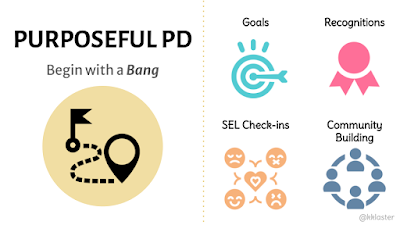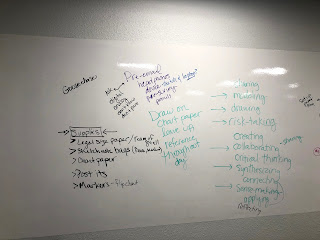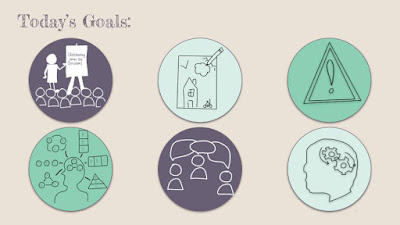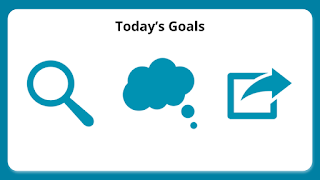I recently reflected on my journey as a professional learning facilitator, so after one full year of remote learning,
I can now admit that I am completely obsessed with improving how I design professional learning experiences.
In previous posts, I shared reflections on my learning preferences and developing my PD session's purpose in the form of -INGs, and now I'm working to strengthen how I begin my professional learning sessions.
I have a lot of experience planning professional learning, but hearing Gayle Allen's Curious Minds podcast interview with Priya Parker made me realize I had a lot of growing to do. This episode was released in 2018, so I've been working on these upgrades for almost three years! I'm now completely obsessed with Priya's book, The Art of Gathering. The examples in her book range from dinner parties, to corporate boardrooms, to city-wide events, and I feel I can apply most of her ideas to educational settings, specifically PD sessions, whether they're virtual or face-to-face events. (By the way, Priya says a gathering occurs any time three or more people come together with a purpose. A gathering is time-bound and has a beginning, middle, and end. So a PD session definitely qualifies as a gathering.)
A story from Gayle's interview that really struck me was about Priya's chapter, Never Start a Funeral with Logistics. Here's that clip of the interview:
As soon as I heard that story, I thought YIKES. How many times have I started my session with a list of norms and logistics? Once I knew better, I could easily do better, and now I start my meetings with purpose. The "How to Start" ideas tend to fall into one of these categories.
 |
| How I want to begin my PD sessions |
Goals:
- Share an essential question, session goals, or -INGs.
- Provide learning outcomes.
- Offer a connected standard/objective. (A favorite co-planner, Laura, and I frequently frame our sessions around a standard from the ISTE Standard for Educators.)
Recognitions:
- Toast the group (raise a coffee mug!) for the occasion. Shout out to my friend Erika who started our #CoffeeEDU this way.
- Recognize the participants for their time, engagement, and willingness to learn and grow.
- Acknowledge a significant date, work, or state of mind of the group.
SEL Check-Ins:
- Provide an opportunity for an emotional check-in.
- Ideas might be something simple, like a fist-to-five ranking, or silly, like "Choose your Vibe" according to the GIFs shown on this slide.
- Use a tool like the Courageous Conversations Compass, which my colleague Chris expertly used during our DEI team meeting on January 6, 2021, after the riots at the Capitol.
- Breathe, meditate, or facilitate another mindfulness activity.
- After the summer protests, my fabulous colleague Nancy started her Monday morning PD session with a gratitude mindfulness activity, and it was the perfect way to begin the week after the tumultuous weekend throughout the country.
Community Building:
- Allow participants to try a quick collaborative activity. Gary Hirsch shared this idea for the virtual world: ask participants to share something in the chat and then "steal each other's ideas."
- Complete a tiny icebreaker (in the chat or breakout room, if virtual).
- Create a virtual space for attendees to connect prior to the session. Use tools like collaborative Slides, Flipgrid, or Padlet; start a discussion prompt in an LMS; or share using a session hashtag.
- Play music. I've had several facilitators ask in a pre-survey to share a favorite walk-up song. They created playlists of all participants' favorites and used this music for session breaks and transitions.
- Two side-notes: I've always enjoyed listening to music when I'm in face-to-face sessions, and I have many playlists for my own PD workshops, but I really don't enjoy music during webinars. I wonder why? Also, I'm always wondering about copyright issues with playing music...




